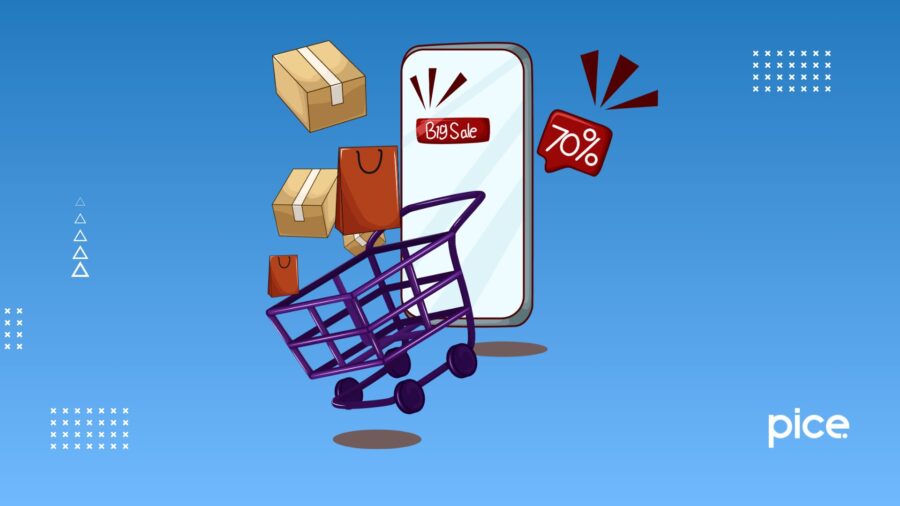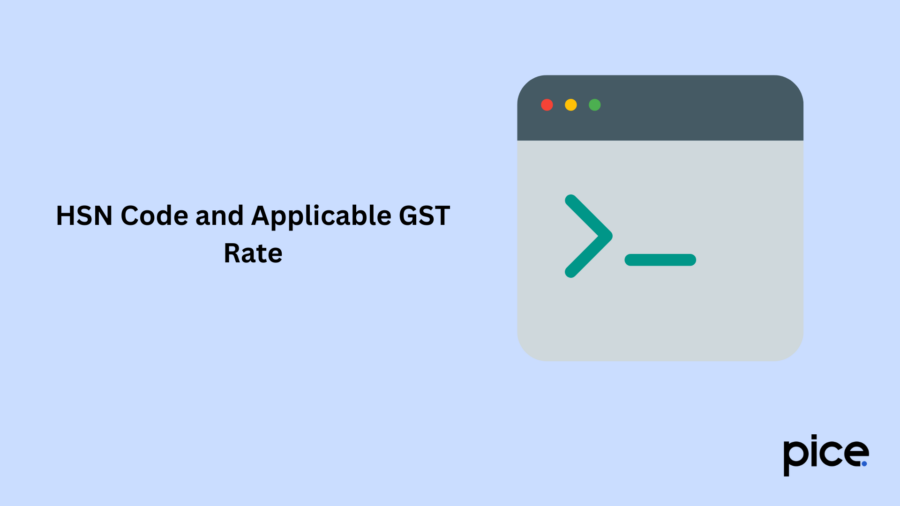GST for E-commerce Sales Applicable
- 2 Jan 25
- 9 mins

GST for E-commerce Sales Applicable
Key Takeaways
- GST ensures a uniform tax structure for e-commerce businesses across India.
- Accurate place of supply determination is essential to avoid tax mismatches.
- E-commerce offers consumers wider choices and competitive pricing.
- Sellers benefit from expanded market reach and streamlined operations.
- Centralized logistics under GST reduces costs and improves efficiency.
After easy access to internet connectivity and smartphones, the e-commerce space has been growing at a fast pace in India. Moreover, the tax norms regarding filing GST returns have clearly described the tax rates on online sales which were missing in the earlier jurisdiction. Whereas, now you can find proper intimations in GST for e-commerce platform sellers like Amazon, Flipkart, etc.
In this guide, let us gain comprehensive knowledge about the Indian e-commerce market regarding:
- How do e-commerce sales go?
- How is the place of supply determined for sellers registered on e-commerce aggregators?
- Major benefits of e-commerce business for both taxable persons and their customers
So, without much delay, let’s dive into further details!
How Does an E-Commerce Sale Work?

To understand the whole framework of an e-commerce sale, consider going through the points below:
- First, a seller registers on an online marketplace like Amazon. There, they click quality pictures of their products and while uploading, they provide brief descriptions of those products along with prices.
- Next, customers search for those products and place orders.
- Most of the time, a seller ships their taxable supplies directly. At times, they take help from the respective e-commerce operator’s logistics centre.
- On each sale, the e-commerce service provider charges a commission from a registered person, and in return they provide support to the seller in terms of receiving payments and delivering their goods safely.
Place of Supply
Like other commercial activities, under the GST registration rules, the place of supply for e-commerce businesses is either categorised as inter-state or intra-state. Accordingly, the GST Council determines whether they should levy SGST, CGST or IGST.
Providing the current place of supply is crucial as wrong entries result in tax contributions to the wrong state. For instance, if someone wrongly mentions an inter-state commercial activity as intra-state, then they fill SGST and CGST instead of IGST. After this, the only option is to meet the IGST dues and then claim refunds for CGST and SGST.
Note: The Goods and Services Tax (GST) system is destination-based. Thus, the government stipulates a goods or service tax at the place where the concerned commodity/service is consumed and does not count the origin. Therefore, the state where an e-commerce product is sold retains the right to collect GST.
Here is a table clarifying the place of supply for e-commerce goods:
| Supply | Place of Supply for Online Businesses |
| Seller sells a product to the consumer(both shipping and billing addresses match) | Place where the buyer receives the product |
| Seller sends products to someone else (Shipping address differs from the billing address) | Billing address (in this case the location of the buyer is the same as the place of supply and it is assumed that the consumer receives their product) |
Below, you can see real-time examples of how the place of supply is determined in GST for e-commerce physical goods:
Example 1: Intra-State Supplies
Mr. Kumar from Lucknow, Uttar Pradesh orders a TV from Amazon. In this case, the Amazon-registered online seller, New Age Electronics Limited, is operating from Allahabad, Uttar Pradesh.
In this example, the place of supply will be Lucknow, Uttar Pradesh. As you can see, the state remains unchanged. Thus, the seller charges only SGST and CGST.
Example 2: Inter-State Supplies
Mr. Kumar, a resident of Kolkata, West Bengal, purchased a laptop from Times Junction, a seller based in Nellore, Andhra Pradesh, via Amazon.
In this example, the place of supply does not match the address of the seller. Thus, the seller will need to charge IGST from Mr. Kumar.
Example 3: Send to a Third-Party
Mr. Kumar decides to gift a watch from Amazon to his daughter, who stays in Vadodara, Gujarat. On the other hand, Mr. Kumar's Amazon-registered address is Lucknow, Uttar Pradesh, and the seller he picked for the order processing, Paradise Electronics Limited, is in Mumbai, Maharashtra.
For this example, the place of supply will be Vadodara, Gujarat, while the supplier’s location is Mumbai, Maharashtra. Due to this difference, the seller will collect IGST from the buyer.
Digital Products such as E-Books
When someone sells digital products like ebooks through online platforms, such instances will be considered as a supply of services. Whether the end customer is a consumer or a business, the place of supply remains the location of the buyer.
Example 4: Sell E-eBook to a Business
M/s Verma, an IT professional in Bhopal, Madhya Pradesh, orders an ebook on cloud services from Amazon. Red Books Ltd. from Kerala processes the online order and delivers the product safely.
In this case, Red Book Ltd. will have to collect IGST on this sales turnover as the place of supply or buyer’s address is outside Kerala.
Example 5: Sell eBook to End Consumer
Mr. Yadav of Udaipur, Rajasthan, orders a top-rated ebook from an online platform. The registered seller on that platform, who owns a shop in Maharashtra, sends him the book accordingly.
In this case, Mr. Yadav will have to pay IGST for effective solutions as the seller he chose is outside Rajasthan. The buyer's IP address does not play any role in this regard.
HSN Code and Applicable GST Rate

When selling a product through e-commerce portals, sellers charge the GST amount by referring to the rates applicable to such goods. Typically, when a consumer pays for the product, that value includes GST. Accordingly, the seller issues invoices that explicitly mention the GST margin and amount incurred on the total invoice value.
According to the GST portal, the GST rate for commissions charged by e-commerce operators to sellers is 18%, falling under the HSN code 9985.
e-Commerce Benefits Both Customers and Sellers
Consumers have more choices in the e-commerce industry than in local marketplaces. Moreover, one can often find better prices online since sellers avoid the expenses associated with traditional retail spaces and offline advertising services.
From a seller’s perspective, you can realise the following advantages:
- One can reach a bigger market
- They are able to boost their sales volume
- Sellers can avoid the expenses and issues of setting up new branches
- Debt management becomes a lot smoother as the seller only has to deal with the e-commerce operator
- Finally, they can operate their businesses smoothly without worrying much about indirect and direct tax compliance issues.
Impact of GST on e-Commerce in India
Upon the introduction of GST for e-commerce, individuals can perceive the following effects:
- Uniform Tax Structure
The introduction of GST has ushered in uniformity in the tax system across India. Previously, it was difficult for an e-commerce company to calculate and levy taxes as the rates used to vary for the different states. But now, it is much easier, and the uniform structure has eliminated the complications of tax evaluations.
- Influence on Small and Medium-sized Enterprises (SMEs)
SMEs that sell via online platforms, dealt a significant impact upon implementation of GST. Currently, these businesses face increased costs in some departments and are also burdened by several compliance requirements. Moving forward, these challenges are expected to ease, thus attracting more sellers to the online space.
- Impact on Logistics
Before the enactment of GST, e-commerce operators needed to maintain offline stores or warehouses across different Indian states to eliminate inter-state taxes. Now, with GST in place, these companies can maintain centralised warehouses, reducing logistics expenses and enhancing operational efficiency.
- Impact on Prices
The e-commerce sellers have experienced a mixed impact after the implementation of GST. This is because prices of many goods have gone down while many products now attract a greater price because of the increased compliance burden.
Conclusion
The GST for the e-commerce industry aims to streamline the tax collection process, but meanwhile, it has also led to many significant compliance challenges. Thus, to better navigate these issues, a sound understanding of the applicability of GST on different types of online transactions across a digital marketplace is necessary.
For related assistance, you can always consult tax professionals and accounting experts to ensure smooth business operations.
💡If you want to streamline your payment and make GST payments, consider using the PICE App. Explore the PICE App today and take your business to new heights.
FAQs
 By
By 
















